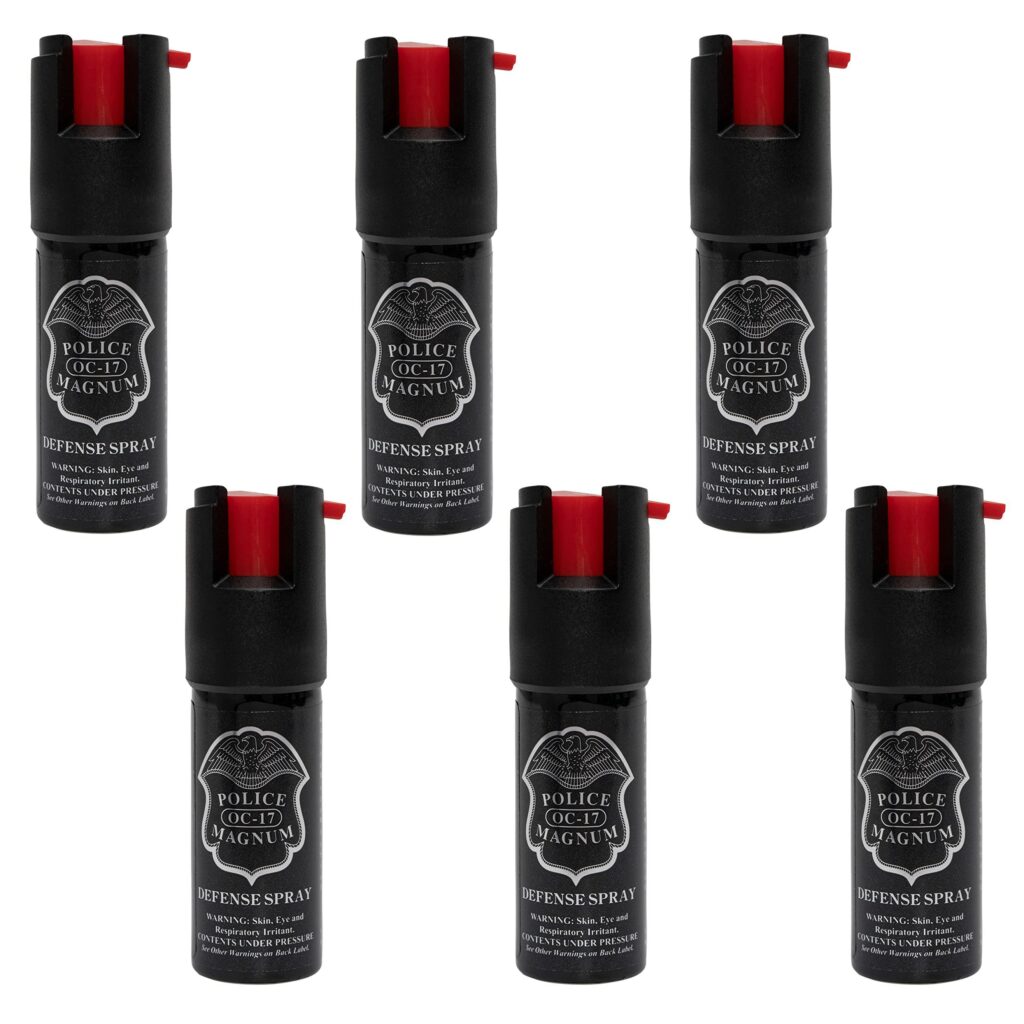Table of Contents
- Choosing the Right Pepper Spray for Effective Self-Defense
- Essential Techniques Taught in Pepper Spray Training Classes
- Legal Considerations and Safety Tips for Pepper Spray Users
- Maximizing Your Confidence and Preparedness Through Consistent Practice
- In Conclusion
Choosing the Right Pepper Spray for Effective Self-Defense
When selecting pepper spray for personal protection, it’s crucial to consider factors beyond just size and brand. Effectiveness hinges on the spray’s active ingredients, typically oleoresin capsicum (OC) concentration, which should be strong enough to incapacitate an attacker but safe enough for self-application if necessary. Additionally, evaluate the spray’s range and spray pattern – options like stream, cone, or fog each have unique benefits depending on your environment and intended use. For instance, a stream reduces the risk of blowback in windy conditions, while a fog pattern can cover a wider area but may be less precise.
Portability and ease of use also play a vital role. Opt for a compact design with an intuitive safety mechanism to ensure quick deployment during high-stress situations. Some models feature keychain attachments or belt clips, making them accessible at all times. Consider these features:
- Size and weight for everyday carry convenience
- Spray duration to maximize exposure time on the attacker
- Legal compliance with local regulations to avoid complications
Ultimately, a well-chosen pepper spray combines power, reliability, and accessibility to empower you confidently in any threatening scenario.
Essential Techniques Taught in Pepper Spray Training Classes
Participants in pepper spray training classes gain hands-on knowledge centered around effective deployment techniques. Instruction focuses on confidently holding and aiming the spray, rapidly drawing it from its holster, and executing precise bursts to maximize impact while minimizing waste. Trainees learn situational awareness to decide the optimal moment and distance for usage, ensuring personal safety without escalating conflict unnecessarily. Emphasis is also placed on understanding the legal boundaries and responsible usage, an often overlooked but crucial aspect of self-defense training.
Beyond the mechanics of spraying, these classes drill essential defensive maneuvers that enhance overall preparedness. This includes techniques such as
- Maintaining balance and foot positioning while deploying spray
- Recovering quickly from the spray’s recoil and preparing for follow-up actions
- Escaping potentially dangerous encounters immediately after use
Legal Considerations and Safety Tips for Pepper Spray Users
Understanding the legal landscape surrounding pepper spray is crucial before carrying or using it for self-defense. Laws vary widely by jurisdiction, dictating permissible sizes, concentrations, and even the allowable age for possession. Some regions require permits or explicitly ban pepper spray, so it’s essential to verify local regulations to avoid accidental legal repercussions. Additionally, misuse, such as deploying pepper spray outside of legitimate self-defense situations, can lead to criminal charges or civil liabilities, emphasizing the importance of knowing when and how to use it responsibly.
Safety is just as important as legality when it comes to handling pepper spray. Users should always keep it in an accessible yet secure spot, away from children or unauthorized persons. Familiarity with the device, including performing regular practice drills and knowing the spray’s effective range, enhances confidence and effectiveness during an emergency. Remember these critical safety tips:
- Aim for the eyes and face while maintaining a safe distance.
- Avoid windy conditions to prevent blowback.
- Practice proper storage to prevent accidental discharge.
- Dispose of expired canisters appropriately.
Maximizing Your Confidence and Preparedness Through Consistent Practice
Regular training sessions are essential in building both confidence and preparedness when it comes to effective self-defense with pepper spray. By repeatedly practicing the techniques, you reinforce muscle memory, enabling swift and precise reactions in high-stress situations. Consistency not only sharpens your aim and grip but also helps you anticipate different attack scenarios, reducing hesitation and boosting your overall readiness. The more you immerse yourself in realistic drills, the more naturally your responses become, ensuring you can act decisively when it truly matters.
Incorporating routine practice offers several key benefits that extend beyond just technical skill:
- Enhanced situational awareness – Training heightens your ability to recognize threats before they escalate.
- Increased mental resilience – Facing simulated stress in practice builds emotional strength and calmness under pressure.
- Better equipment familiarity – Handling your pepper spray frequently ensures seamless operation without fumbling.
- Improved reaction timing – Repetition reduces delay between threat recognition and defensive action.
In Conclusion
Incorporating pepper spray self-defense training into your safety routine is a proactive step toward personal security and confidence. Whether you’re a beginner or looking to sharpen your skills, understanding the proper use, legal considerations, and situational awareness through professional classes can make all the difference. Remember, mastering pepper spray is not just about carrying a device-it’s about empowering yourself with knowledge and practice to respond effectively when it matters most. Stay informed, stay prepared, and prioritize your safety with the right training. Your peace of mind is worth every effort.Check Our Other Blogs
- StunGun – Your Trusted Source for Stun Guns, Laws, and Self-Defense Tips
- PepperSprayLaws – Your Trusted Resource for Pepper Spray Information
- StunGunLaws – Your Trusted Guide to Stun Gun Legality and Safety




